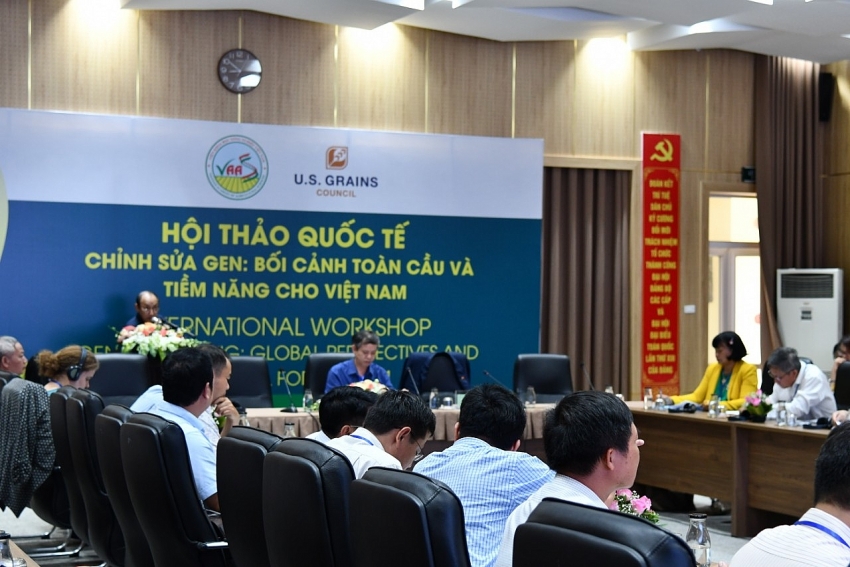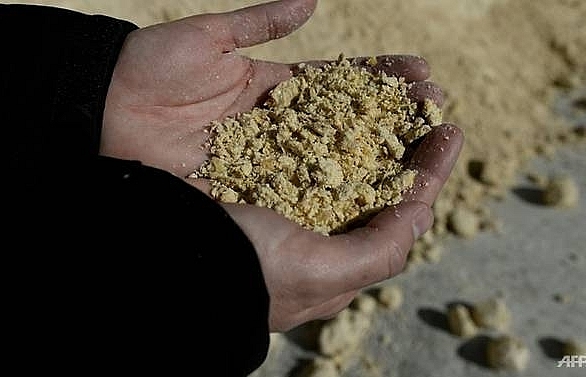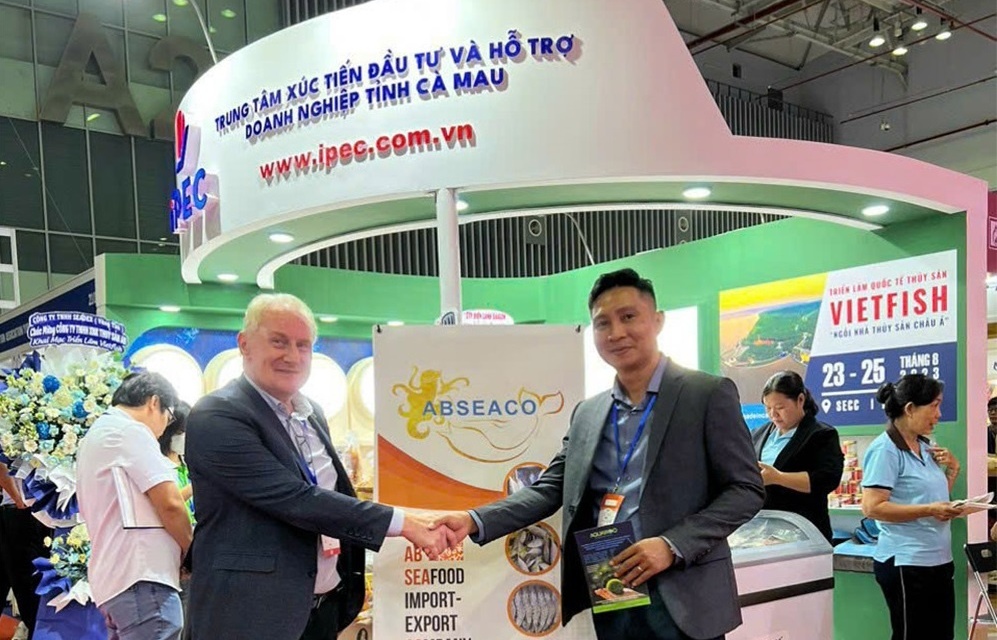Discussions on viability in genome editing in Vietnam
 |
| Discussions on viability in genome editing in Vietnam |
On July 17, The US Grains Council (USGC) in cooperation with the Vietnam Academy of Agricultural Sciences (VAAS) organised an international workshop in Hanoi, Vietnam, titled Genome Editing: Global Perspectives and Potential for Vietnam.
The workshop was attended by scientists specialising in agriculture, biotechnology, genetics, and plant breeding, as well as representatives of research institutes, universities, regulatory bodies, and local and foreign associations.
At the workshop, experts clarified concepts and went into great detail in discussing genome editing (also called gene editing), which is a technology that has been researched and developed for more than a decade. This technology allows scientists to modify the genome of a plant to create desirable traits that have been shown to improve plant varieties, benefit farmers, and enhance traits for both commercial and consumer benefits.
According to Tran Xuan Dinh, vice chairman, Vietnam Seed Trade Association, There is a distinction between gene editing and creating genetically modified organisms (GMOs). Notably, GMO involve moving genetic material from different species to the objects that people want to improve. For example, scientists can insert herbicide resistance or stem borer resistance genes into corn from other creatures. Meanwhile, genome editing is a way of making specific changes to the DNA of a cell or organism. An enzyme cuts the DNA at a specific sequence and when this is repaired by the cell a change or “edit” is made to the sequence. The largest difference is that other creatures’ gene do not appear in the genome editing process.
“Genome editing is a new technology, thus scientists need to carefully study and fully evaluate its advantages. Similar to the GMO technology, which has been subject to debate regarding its impact on the environment and organisms, countries have to build regulations to strictly control gene editing as well as assess its safety for the food and feed processing sector. However, in my opinion, compared to GMO technology, this approach is safer – and does not need genes from bacteria,” Dinh said.
“This is the first time that a conference to discuss genome editing is organised in Vietnam. As there are no regulations managing genome-edited creatures, it is necessary to get an accurate scientific assessment for the management work. In case these assessments show that this method is similar but faster than traditional breeding, I think it would be reasonable to implement it in Vietnam. Another important thing is that customers can distinguish GMO and genome-edited products,” Dinh said.
Professor Hiroshi Ezura, director of Tsukuba Plant Innovation Research Center, shared his experiences with conference participants about developing new breeding techniques to improve crops in Japan. He shared practical stories about breeding Japanese tomato varieties created using gene editing to improve nutritional quality with high gamma amino butyric acid (GABA) content.
GABA is a naturally occurring amino acid that acts as a neurotransmitter, which helps relax the body, ease stress, diminish fear, and improve sleep. GABA has become a popular ingredient in food supplements in recent years but cannot be easily found in natural food sources. The creation of a new tomato variety from gene editing technology with high GABA content was a major achievement, and is expected to to be widely grown in Japan.
Prof. Bui Chi Buu, former vice president, Vietnam Academy of Agricultural Sciences said, the greatest challenge to implement the gene editing technology in Vietnam is the lack of a legal framework, despite its tremendous development potential. The results of the application of genome editing show many advantages compared to the GMOs.
“Using the genes of a plant to edit its characteristic is also much safer than gene modification, thus the associated health risks are also smaller. At present, numerous countries, including Japan and Thailand, are adding this method to their regulations and apply it in genetic selection,” Buu said
Scientist agree that clear policies and regulations on gene editing are a key factor in developing and optimising the technology’s potential. The US, among others, has identified that the issuance of new regulations for gene editing technology and products produced through this technology is unnecessary because the new plant varieties are not genetically different from those created by traditional techniques.
Both Australia and India are working to introduce regulations governing products created by gene editing technology containing foreign genes similar to genetically modified products, while other products that do not contain foreign genes are regulated similarly to products created through traditional plant breeding technology. The European Union (EU) considers genetically edited crop varieties to be genetically modified and is now assigning the European Food Safety Authority (EFSA) to assess the compatibility of current risk evaluation methods with products created using gene editing techniques.
Many other countries are also in the process of formulating policies and guidelines on the management of genetically-edited crops and products.
Gene editing is a relatively new field in Vietnam and remains unregulated. Work is underway for Vietnam to develop regulations to implement the Convention on Biological Diversity as well as the Law on Biodiversity and related laws.
What the stars mean:
★ Poor ★ ★ Promising ★★★ Good ★★★★ Very good ★★★★★ Exceptional
Related Contents
Latest News
More News
- Growth beckons for GenAI startups in Vietnam (November 21, 2024 | 17:47)
- SABECO to elevate Vietnam's beverage industry to global standards (November 21, 2024 | 17:36)
- ABeam Consulting Vietnam introduces BSQCD Purchasing Strategy Framework (November 21, 2024 | 16:40)
- Major railway requires debt considerations (November 21, 2024 | 12:07)
- Reviving a new life cycle for plastic waste (November 21, 2024 | 09:16)
- Key balances maintained for industrial production (November 21, 2024 | 08:00)
- Ecolean Vietnam honoured with prestigious sustainability award (November 19, 2024 | 10:01)
- HEINEKEN Vietnam’s clear path towards net-zero (November 18, 2024 | 15:13)
- VLCA 2024 honours corporate governance excellence as listed companies raise the bar (November 18, 2024 | 09:00)
- High-tech personnel to drive competition (November 17, 2024 | 09:21)




 Tag:
Tag:




















 Mobile Version
Mobile Version